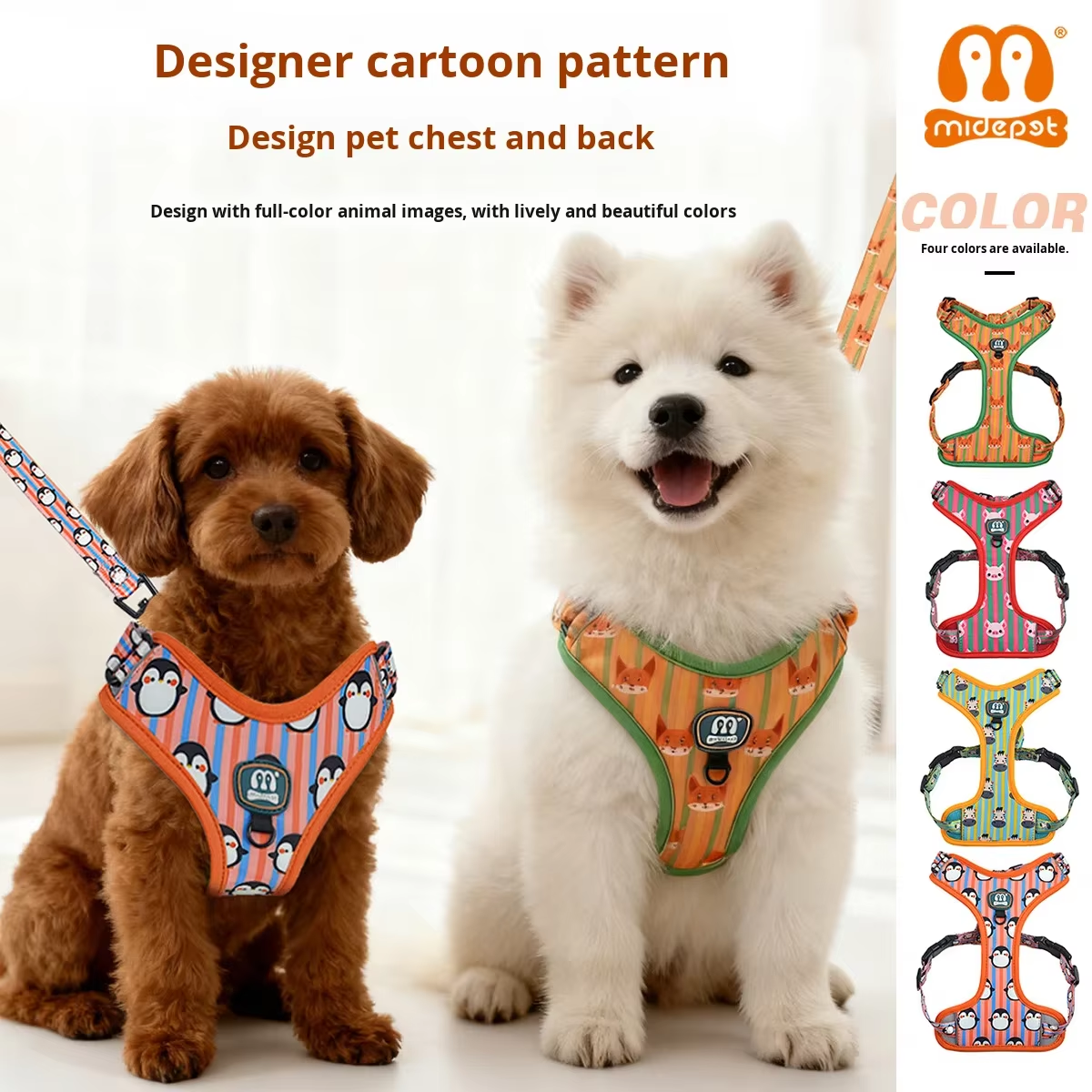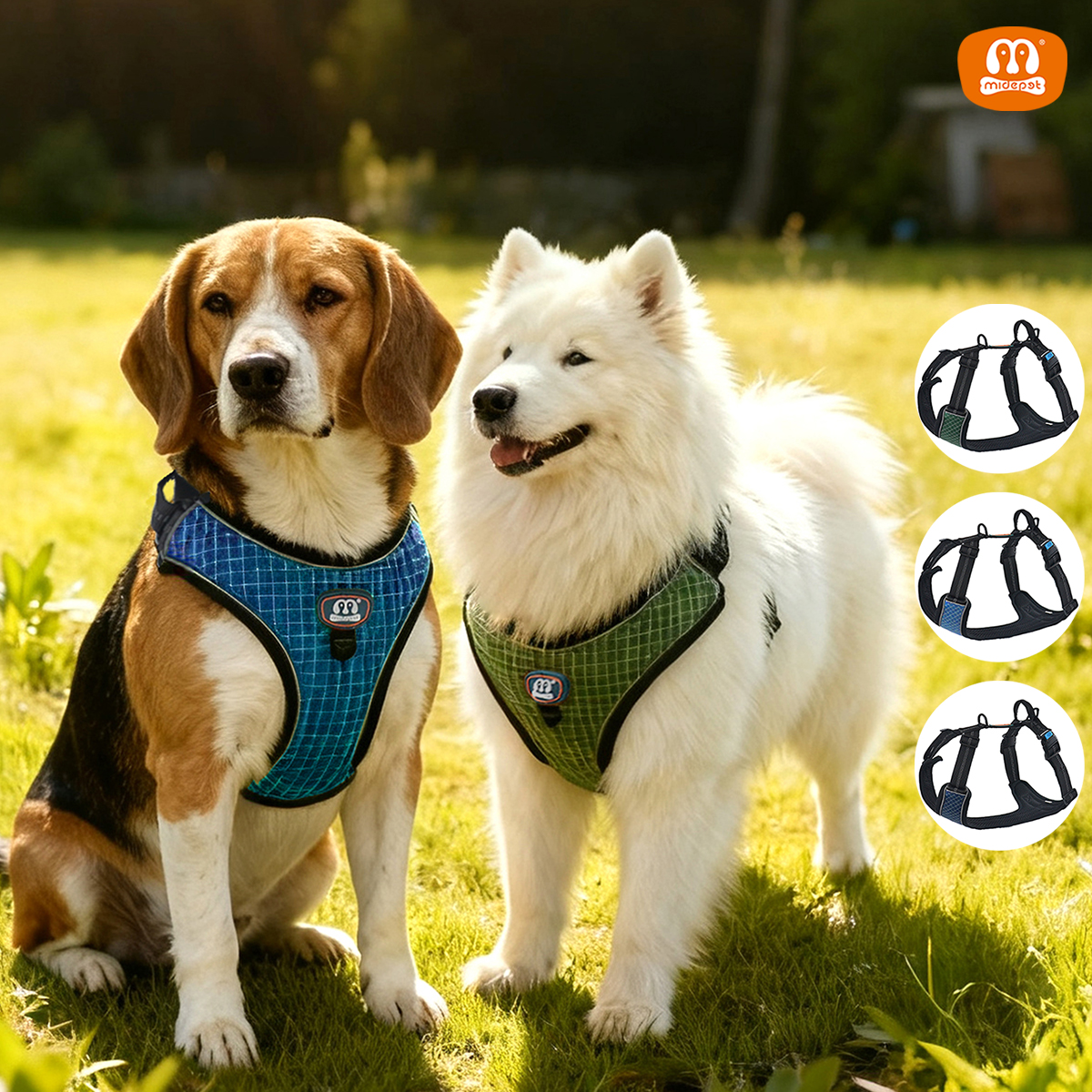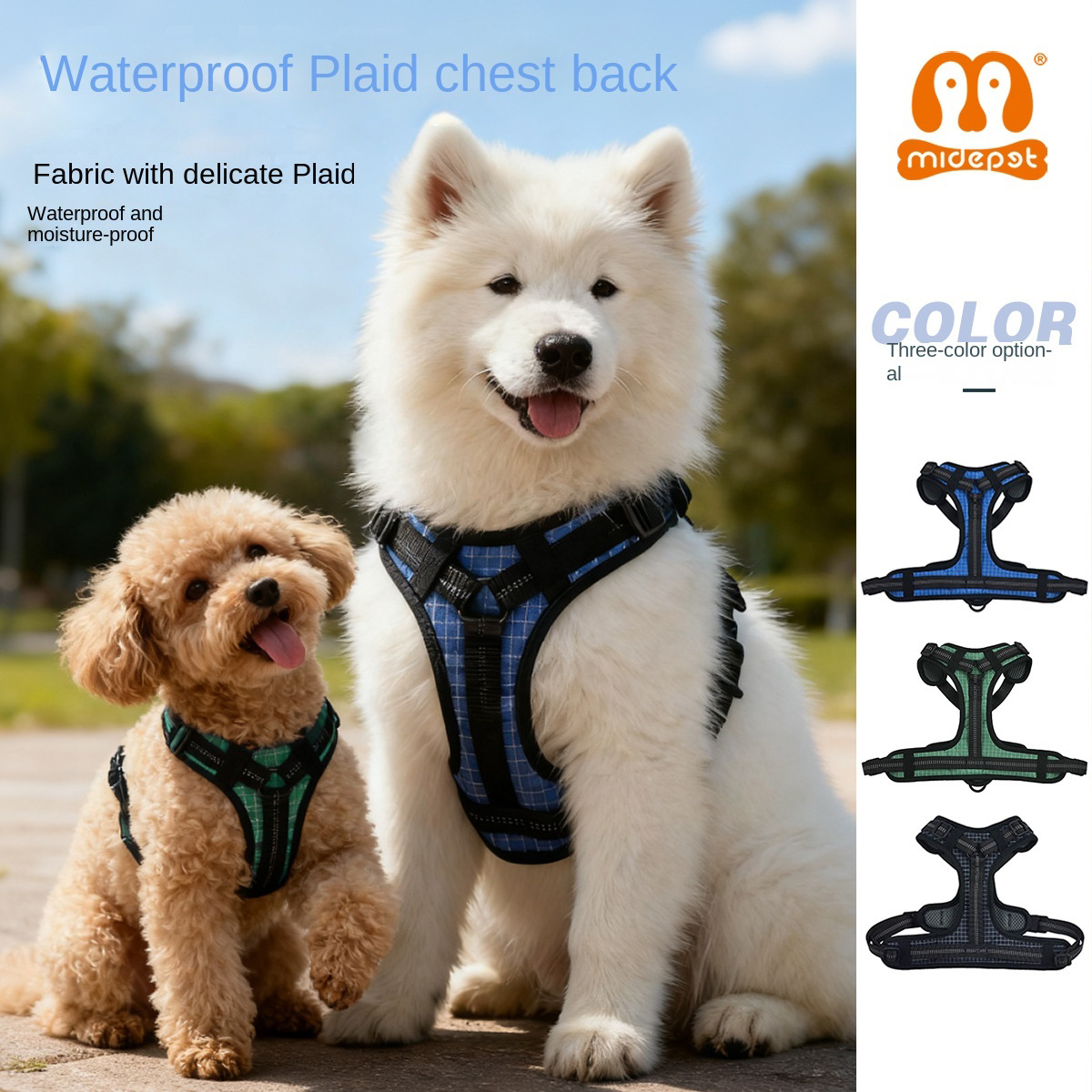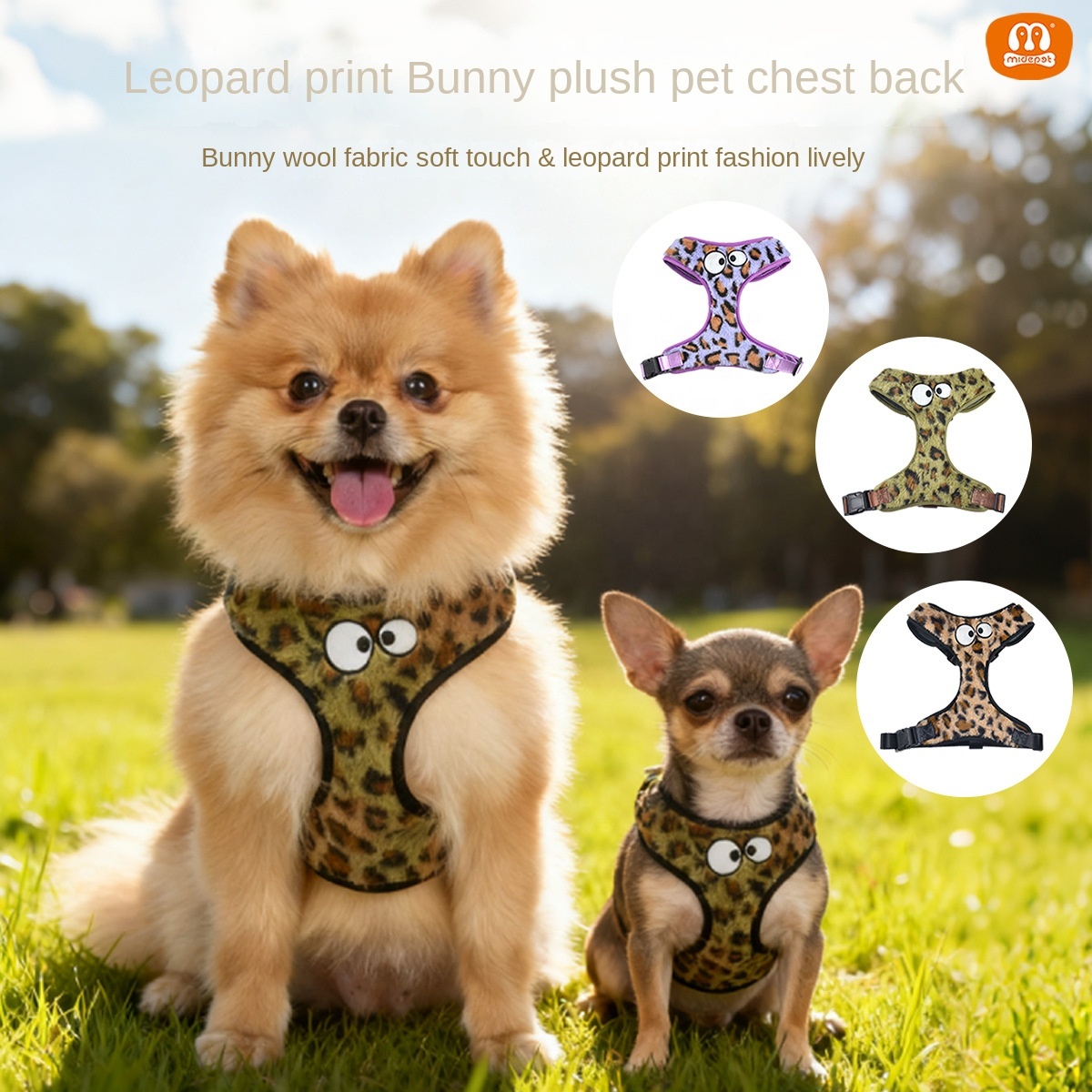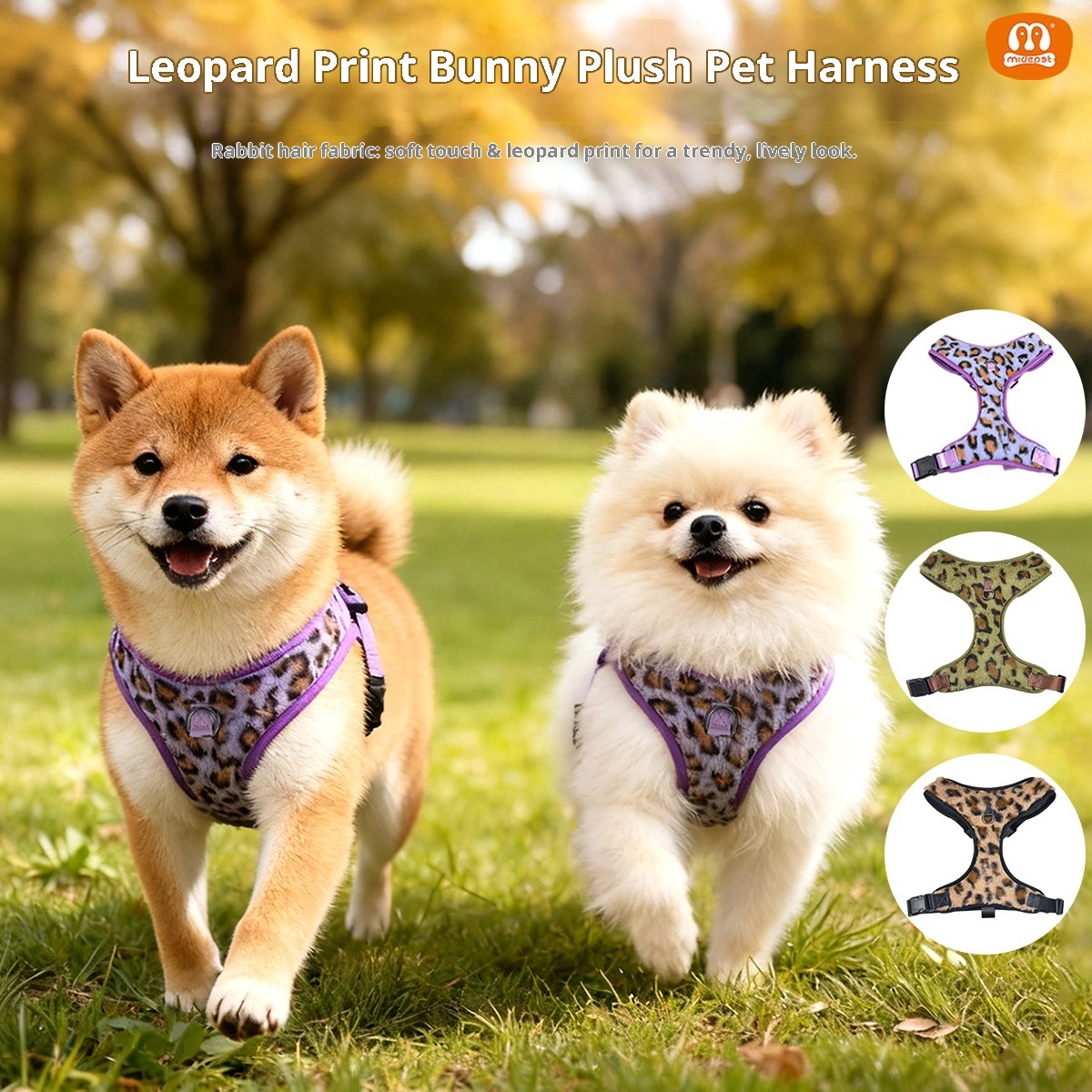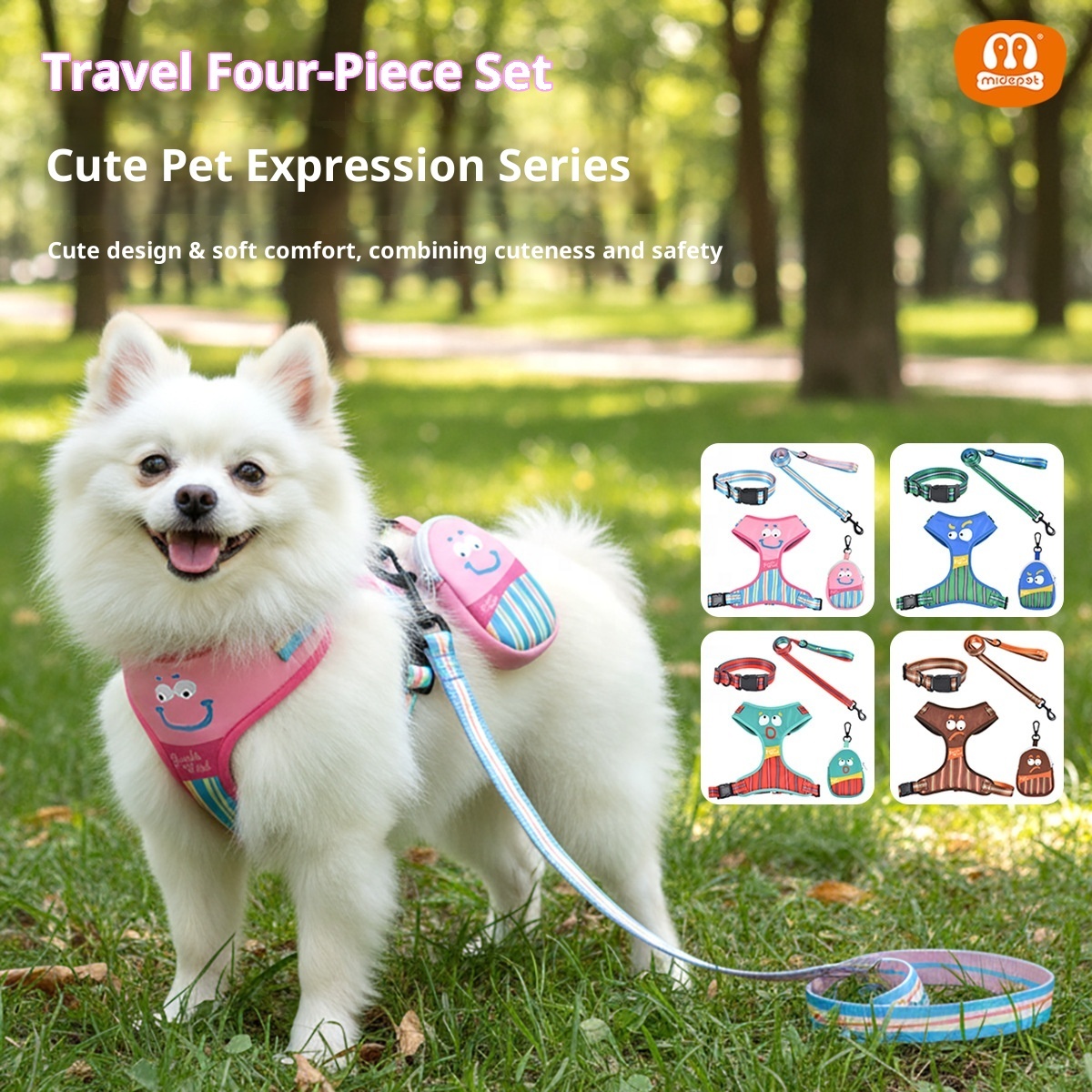Comprehensive Guide to Choosing the Right Dog Harness
Comprehensive Guide to Choosing the Right Dog Harness
The Importance of a Dog Harness
Choosing the right harness for your pet is crucial not only for their comfort and safety but also for effective daily walks and training. Unlike traditional collars, harnesses are more pet-friendly as they distribute the pulling force more evenly, reducing pressure on the dog's neck. This article will provide a comprehensive guide on how to select the perfect harness for your dog from multiple perspectives.

Key Factors in Choosing a Dog Harness
1.Proper Fit and Size
Ensuring the harness fits correctly is the top priority. Accurate measurements of your dog's chest and neck are essential to select the right size. An ill-fitting harness can cause discomfort, be ineffective, or even hinder your dog's normal activities. Midepet's self-developed harness series offers various size options and comes with a detailed measuring guide to ensure every dog finds the perfect fit.
2.Material, Durability, and Breathability
The material is a critical factor when choosing a harness. Durability and breathability are key to the harness's comfort and longevity. High-quality materials not only withstand long-term use but also maintain good breathability in hot weather, ensuring your dog's comfort.
3.Aesthetic Appeal, Colors, Patterns, and Fashion Elements
While functionality is paramount, the appearance of the harness is also important. Choosing a harness with vibrant colors and stylish patterns can reflect the owner's taste. Midepet's harness series combines fashion elements with a variety of colors and patterns to meet pet owners' aesthetic needs. These eye-catching designs not only make your dog stand out but also attract their attention.
4.Reflective Strip Design
Reflective strips are crucial for nighttime walks. They enhance your dog's visibility, reduce the risk of traffic accidents, and ensure their safety.
5.Anti-Pull Design
An anti-pull design helps quickly control a suddenly unruly dog, minimizing harm to the dog. This feature is especially important for energetic and easily excited dogs during outdoor activities.
6.Eco-Friendly Materials
Choosing eco-friendly materials not only protects the environment but also ensures the health of your dog. Eco-friendly materials typically do not contain harmful chemicals, making them safer. Midepet's new series uses RPET material, made from recycled plastic bottles. This not only reduces plastic waste but also lowers reliance on non-renewable resources, helping to reduce environmental pollution. RPET material undergoes strict processing and treatment, ensuring it is free from harmful chemicals and safe for pets. It is less likely to cause allergies or other health issues for your pet.

Advantages and Disadvantages of Different Types of Dog Harnesses
No-Pull Harness
No-pull harnesses are designed to reduce a dog's pulling behavior. When the dog pulls, the harness applies gentle pressure, causing discomfort and discouraging the behavior. This type is suitable for dogs that tend to pull during walks. However, its effectiveness may be limited for very strong dogs.
Back-Clip Harness
The back-clip harness features a buckle located on the dog's back, making it easy to put on and take off. It is ideal for small and well-behaved dogs. While it offers a simple and effective way to control the dog, it may not provide sufficient control for dogs that pull forcefully.
Front-Clip Harness
The front-clip harness has a buckle located on the dog's chest. When the dog pulls, it redirects the dog towards the owner, thereby reducing pulling behavior. This type is perfect for dogs that like to pull, but it may be more complex to put on and adjust compared to other types.
Step-In Harness
The step-in harness is designed for simplicity. The dog just needs to step into it, making it a great choice for dogs that dislike traditional harnesses. It offers high comfort and is suitable for all types of dogs, especially those that are reluctant to put their head through a harness.

How to Help Your Dog Adjust to a Harness
Tips for First-Time Use
When putting a harness on your dog for the first time, stay calm and patient. Allow your dog to sniff and get familiar with the harness before attempting to put it on. Gradually try to put it on, and keep the first wearing session short. Reward your dog with treats and praise to make the experience positive.
Training Techniques for Gradual Adjustment
Positive Reinforcement: Reward your dog each time they successfully wear the harness to create a positive association with it.
Gradual Adaptation: Start by having your dog wear the harness indoors, then gradually move to short outdoor walks, slowly increasing the duration and distance.
Patient Guidance: Remain calm and avoid forcing the harness on your dog. Let them naturally accept the harness as part of their routine.
With the comprehensive insights provided above, you should now have a clear understanding of how to choose the right harness for your dog. Prioritize your dog's comfort and safety by selecting a harness that fits their size, personality, and activity needs. We hope your dog enjoys every walk with their new harness.


